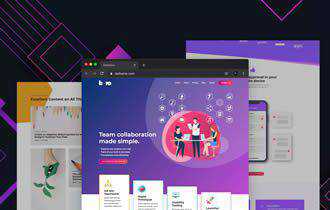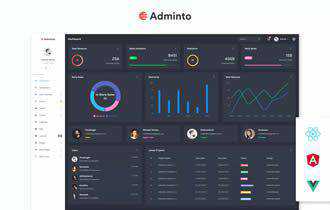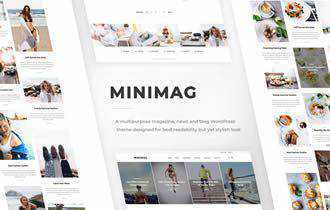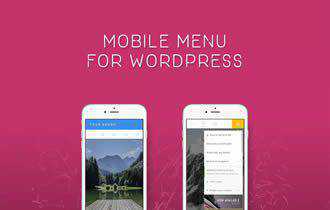Before integrating SAST into your SDLC you want to make sure that your code analysis produces only relevant findings with the best performance possible. In the first part of this guide, we will cover the following 5 configuration options and best practices for fine-tuning: Set the Language Version ...
Xdebug Update: November 2019
London, UK
Tuesday, December 10th 2019, 09:17 GMT
Another month, another monthly update where I explain what happened with Xdebug development in this past month. It will be published on the first Tuesday after t...
Latest PECL Releases:
Package:
Summary:
Compress or decompress zip files using ZipArchive
Groups:
Author:
Description:
This class can compress or decompress ZIP files using ZipArchive...
Read more at https://www.phpclasses.org/package/11461-PHP-Compress-or-decompress-zip-files-using-ZipArchive.html#2019-12-10-05:57:52

By and large, web designers are very passionate about their job. That stands out in contrast to most other industries. But when it comes to the bottom line, web design is just like other businesses. The main point is to gain clients and make a decent living.
As such, there is a lot of talk about booking big clients with budgets to match. Yet, that’s not always realistic – especially for freelancer designers who are just starting to make their way. Even seasoned pros may not have the desire or capacity to take on larger projects.
Still, going for the biggest fish seems to be the prevailing advice. So, does that mean smaller projects aren’t worth anything? Absolutely not. There are still important things to be gained. Here are a few reasons why you may not want to toss those little fish aside.
The Web Designer Toolbox
Unlimited Downloads: 1,000,000+ Web Templates, Themes, Plugins, Design Assets, and much more!
Learn to Build Client Relationships
Among the biggest challenges any business owner must face is in learning how to deal with people. I’d say it’s nearly as important as being a talented designer and developer.
Just as no two projects are the same, you’ll find that no two clients are, either. This means that you will interact with all kinds of different personalities over the course of your career.
Soon after I launched my business, I took on all manner of small projects – and met a few characters along the way. And, even though I didn’t see it that way at the time, it also presented a great opportunity.
You see, I didn’t make a whole lot of money. But I learned some important lessons about how to communicate with my clients. I figured out how to explain things in more user-friendly terms, how to keep them updated on work in progress. I also gained valuable insight into what their expectations were and how to take/respond to criticism.
It was a bumpy ride, for sure. There was a lot of stress and worry. Sometimes I could have handled things better. But the experience itself was priceless. Learning to build working relationships can be a key to both personal and professional growth.

A Chance to Sharpen Skills
There are plenty of places where web designers can learn new skills. But to truly put those skills into practice, you need to build something. Small projects can serve as a great proving ground.
For one, the expectation level should be equal to a client’s budget (though it’s important for you to explain this to them). A low-end eCommerce project, then, should mean fewer features and customizations.
This allows you to start small and build a foundational understanding of the type of site you’re working on. It can also serve as a bit of a playground for experimentation.
Because you’re on a shoestring budget, you probably won’t have access to some of the fancier scripts or plugins. The result is that you may have to dig into code a little more to get things done. It’s a wonderful method for figuring out how things work.

Find Yourself
The more projects you have under your belt, the more you can learn about yourself. What kind of projects do you like? What type of workflow works for you?
These are valuable lessons to learn before you move on to bigger things. Because, until you understand your niche within the industry, it can be difficult to set yourself up for success.
For instance, it’s probably not a good idea to take on a massive project without having any idea of how you’re going to approach it. Without knowing which tools to use or even whether or not you’ll be comfortable with the work involved, you’re opening up a dangerous can of worms. You could well be placing yourself in a bad situation.
While smaller projects still need to be taken seriously, you can use them as a sort of guide. Inevitably, you’ll find that you like some aspects more than others. Perhaps you’ll realize that you are really into SEO, while learning that membership-based sites aren’t your cup of tea.
Whatever your preferences, the goal is to find out where you fit in. That takes time and often requires working on a variety of different projects. This is where you can use smaller gigs as a way to discover who you are.

Something More Than Money
It’s unlikely that you’ll get rich relying on small web design projects. That’s why many designers aim higher over the long term. But that doesn’t mean they lack value. Quite the opposite.
Building websites at the lower end of the spectrum is a great way to develop you brand, become better at your job and find your comfort zone. And while you don’t have to stay in this realm forever, you should make the most of it while you are there. It will help you prepare for what lies ahead.
The post Why You Shouldn’t Ignore Smaller Web Design Projects appeared first on Speckyboy Design Magazine.
The keynote speaker at this year’s PHP Barcelona conference was Rasmus Lerdorf the creator of PHP and he gave an excellent talk about the history of PHP, PHP 7.4 & 8, career advice, motivation, burn-out and focusing on things that really matter.
...
Crafty Code Coverage
London, UK
Monday, December 9th 2019, 13:30 GMT
Xdebug's code coverage functionality has had dead code analysis for years. It is used to be able to mark lines of as having executable code on it, as well as lines which c...
Latest PEAR Releases:
Package:
Summary:
Manage sales in multiple sites with BillBee API
Groups:
Author:
Description:
This package can manage sales in multiple sites with BillBee API...
Read more at https://www.phpclasses.org/package/11460-PHP-Manage-sales-in-multiple-sites-with-BillBee-API.html#2019-12-09-03:21:09

Scrolling is among the most basic tasks we ask of users. And, judging from the amount of scrolling on websites and apps these days – we’re asking a lot.
Adding scroll-based effects can be a great way to enhance user experience. That is, so long as they don’t interfere with the ability to navigate through long stretches of content. If anything, effects should make things easier and add a bit of flair to the mix.
Here is a collection of scrolling effects and utilities that will wow your visitors and (hopefully) stay out of their way.
The Web Designer Toolbox
Unlimited Downloads: 1,000,000+ Web Templates, Themes, Plugins, Design Assets, and much more!
Section by Section
Modern webpages are often broken down into multiple content sections – each with its own distinct elements. This handy snippet adds a button (available in a variety of styles) to the bottom of the screen that allows users to click and scroll to the next section down. It uses CSS IDs coupled with jQuery to make the navigation work.
See the Pen
demo:CSS scroll down button by Naoya
All Indications Say You’re Scrolling
Scroll indicators have become very popular on content-heavy websites. They communicate how far a user is into a story in an easy-to-digest method. Bonus that this solution is CSS-only.
See the Pen
CSS only scroll indicator by Mike (@MadeByMike)
You Can Scroll If You Want To
Okay, this snippet isn’t necessarily an effect on its own. But it does serve a purpose. So often, designers utilize full-screen background images and other elements that may make scrolling ambiguous to the user. With that, small items like this animated scroll icon let users know that yes, there is more content down below. It’s not right for every situation, but there are times when it makes sense.
See the Pen
CSS Site Scroll Micro Animation by Ryan Mulligan
The Incredible Shrinking Header
Sticky headers like this one have become a staple over the years. Why? They can add a ton of user convenience. The ability to navigate to other areas of a site without having to scroll up to the top of the page just makes life easier. As per usual, this example shrinks into a more compact element as you scroll down the page.
See the Pen
Scroll Header by Blake Bowen
Slide to the Right
Here’s another take on the sticky header. This time, it’s fine-tuned for a one-page site. The top navigation automatically highlights the current content section and allows users to quickly switch between them.
See the Pen
Sticky Slider Navigation (Responsive) by Ettrics
Flying Colors
Let’s take a look at another snippet that would be a great fit for one-page sites or a long page with multiple content sections. It uses CSS and a little bit of jQuery to change the background color as you scroll down (and yes, it works in reverse too). You might also want to check out a script that does the same thing, but with gradients.
See the Pen
Changing background-color while scrolling version 2 by JP Nothard
Turning Vertical into Horizontal
Have you ever wanted your website to scroll horizontally instead of vertically? You can do that without any fancy scripts, of course. But what if you didn’t want a horizontal scroll bar? In that case, you’d need something like this example. It utilizes a script called jInvertScroll, which turns your site into a side-scroller, complete with parallax effects.
See the Pen
Side Scrolling from jInvertScroll by SitePoint
Animate on Scroll
Among the bigger trends these days is animating content as it comes into the viewport. When tastefully done, it can bring attention to each section. But go too far and it becomes more like an online circus act. If you decide to take the plunge, consider this snippet. It’s powered by the AOS (animate on scroll) library.
See the Pen
AOS – animations by Snik
Scroll On, Web User
Back in the day, the prevailing thought was to avoid scrolling at all costs. Now, social media and smartphones have trained us to cover long expanses with our thumbs (and cursors). So, we might as well make it both fun and useful.
That’s what the snippets above aim to do. They cover a variety of use cases and, for the most part, steer clear of being obtrusive. It’s what building a solid UX is all about.
Looking for more ideas? Take a look at our CodePen collection for additional scroll snippets!
The post Add Scroll Effects & Utilities to Your Website with These CSS & JS Snippets appeared first on Speckyboy Design Magazine.








